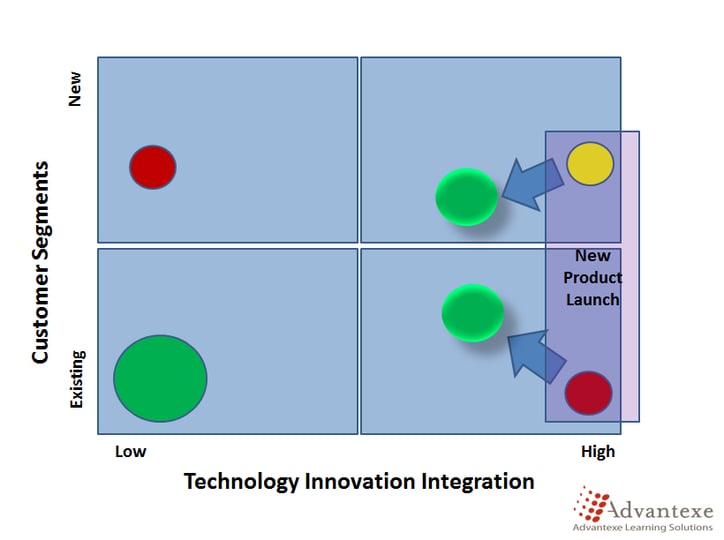
Apple has announced that it is launching the iWatch in October on or about the same time it launches the iPhone 6. Over the weekend, Apple quietly announced that they have hired a TAG Heuer executive to become head of sales. What an interesting lesson in strategic learning. TAG Heuer is part of the luxury goods company LVMH which owns such iconic brands as Louis Vuitton, Moet Hennessey, Fendi, and Dom Pérignon.
In an interview with CNBC, Jean-Claude Biver, the head of the head of LVMH’s watch brands, confirmed that the executive was leaving. He also claimed that Apple apparently plans on marketing the iWatch as "Swiss made" to add an air of credibility when positioning it to consumers.
Back in late March 2014, The Financial Times published a fascinating article titled “Swiss watchmakers say they have no time for tech groups’ advances.” Basically, the article shares stories about how technology companies have been reaching out to the Swiss watchmakers to see if they want to partner. The answer has been a resounding no. The Swiss watchmaker position has been that the technology watch market and the luxury watch market are two different markets and marrying them together would dilute the value proposition and brand of the existing luxury market.
“We have been in discussions – not ever initiated by us – with practically all players in smart wearables up until today,” Swatch chief executive Nick Hayek told the Financial Times. “However, we see no reason why we should enter into any partnership agreement.”
When I read that, I immediately thought about all of the mainframe computer manufacturers who scoffed at the idea of the “personal computer” and to some of the photography manufacturers who thought this “digital thing” was a completely different business than good old high quality paper and chemicals. Not paying attention to potential disruptive technologies didn’t work out too well for companies like Digital Equipment Corporation, Kodak, andPolaroid.
Now, let’s compare another market that has distinct similarities: the luxury eyeglass market. Here too there are several large distinguished brands that could opt to stay away from “wearable technology” and stick with business as usual, but Luxottica led the way in breaking from tradition when they partnered with Google on Google Glass. So far the results have been mixed but it shows that a company like Luxottica will be aggressive in terms of evolving their business and leveraging innovation.
As participants of our business acumen learning initiatives know, strategy is everything. No matter if you are making strategy or executing strategy, it is the direction you need to make the best decision and to create alignment.
One of the tools that we use to facilitate both learning and application is The Technology Integration Matrix. This tool helps organizations think about the potential strategic positioning of new products utilizing technology evolution when understanding the relationships between customer segments.

Our hypothesis for discussion and application…
Technology Innovation Integration
This is basically what we were talking about in the iWatch and Google Glass examples. What is the level of technology innovation integration? Is it low as in the case of the existing providers of Swiss watches or is it high as in the case of Luxottica’s partnership with Google?
Customer Segments
Do you focus and position on existing customer segments or do you focus and position on new customer segments? And can you do both?
The Existing Customer / Low Technology Innovation Sector
This is where companies like Tag Heuer exist today. They are profitable (green circle) and have significant share (size of the circle). The question is this: how sustainable is the market? Does innovative technology erode it or destroy it?
The New Customer / Low Technology Innovation Sector
This is not a good place to be as a mature product rarely is able to capture new customers unless they drastically cut the price which then dilutes their existing customer base. Many companies make this mistake and fail.
The Existing Customer / High Technology Innovation Sector (New Product Launch)
This is a highly risky place to be. Basically, you are trying to convert existing customers to a new way of thinking and that could be costly and take time. Software companies for example struggle with the whole notions of platform migration. The goal is to successfully launch and then move the product/solution to being mainstream quickly.
The New Customer / High Technology Innovation Sector (New Product Launch)
This is the easier sector to be in a risky investment. In most cases, it is easier to launch a new technology to new customers than it is to launch to existing customers. The segment that you focus on is the innovative, early adopters and you build the business and the brand by capturing their loyalty. The hard part of course is maintaining your existing customers at the same time. Some of the major car manufacturers are struggling with the migration to battery power while a brand new company like Telsa is able to explode the market.
Every business and every market is faced with similar challenges. Do you and your organization have the skills to make this happen? Talk with us…we’d love to discuss.




